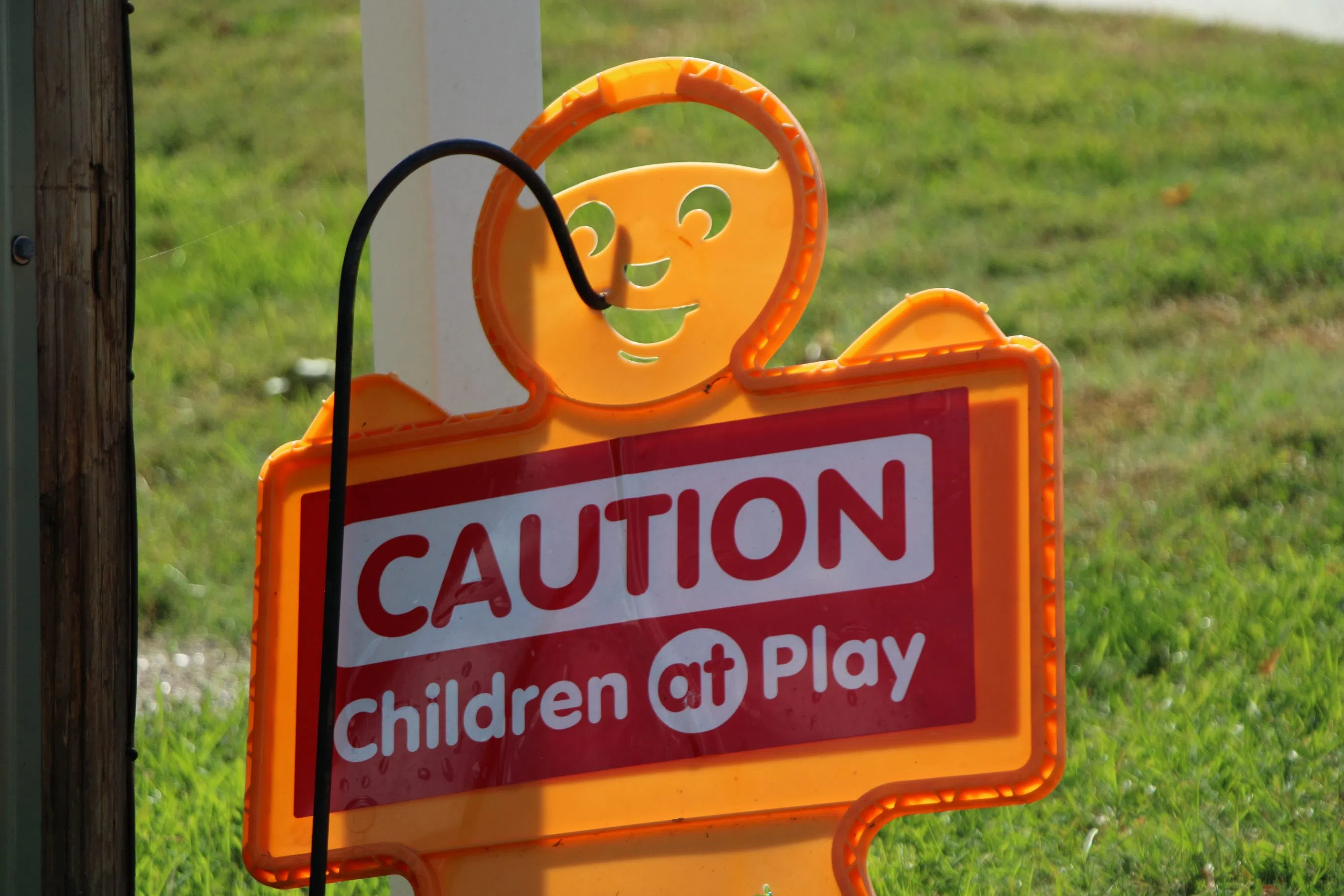
Children at Play sign, (Brian Neben, Central Nebraska Today)
DAWSON CO. — The lack of child care options in Dawson County has negative impacts on working parents and employers.
A report produced by First Five Nebraska and the Nebraska Public Power District details the toll insufficient child care access has on the county.
“Dawson County’s child care programs create employment opportunities for working parents, encourage workplace productivity for employers, generate revenue from increased economic activity and help build the talent pipeline to compete in tomorrow’s marketplace,” according to the report.
But like most of the state, the need for child care options in Dawson County exceeds the available supply.
“Lack of options for stable, reliable child care take a heavy toll on Dawson County’s working parents and employers—nearly $7.8 million annually in direct losses—and a nearly $1.3 million loss of taxable retail sales,” the report states.
“In 2019-2020, First Five Nebraska commissioned the University of Nebraska—Lincoln, Bureau of Business Research (BBR) to study the economic fallout of inadequate child care options on family income, employer profitability and state revenues,” the report states.
Calculations are based on the estimated number of working parents with at least one child under age five.
There are an estimated 1,571 working parents who may be impacted by a lack of child care.
Effect on Working Parents
“Dawson County parents depend on stable child care arrangements that align with their working schedules and obligations. However, the scarcity of available child care means that families have little flexibility or alternatives when they cannot access a provider,” the report states.
Short term disruptions in child care arrangements range from a child being sick or the temporary closure of the regular child care provider. As a result, working parents may have to arrive late at work, leave early or miss a full day.
This is especially problematic for those who are earning an hourly wage and do not have time off benefits.
The long-term issues result from more deeply systemic issues, such as the permanent closure of a child care provider or the overall affordability of child care. Working parents may have to switch from full time to part time, decline opportunities for advancement or leave the workforce altogether to care for their children, the report summarizes.
Effect on Businesses
Child care gaps have a pronounced effect on the take-home pay earning potential and career opportunities for individual workers. This in turn translates to economic losses for Dawson County employers and businesses.
“Child care issues frequently result in reduced employee focus, reduced working hours and absenteeism, which directly impact workflow and business productivity. These losses may be amplified by voluntary or involuntary worker turnover, requiring employers to take on the additional expense of hiring and onboarding new workers,” the report states.
Effect on County Taxable Sales
“Breakdowns in child care result in a decrease in taxable income, leading to lower amounts of taxable retail sales. In the Dawson County area, non-motor taxable retail sales have averaged 24.4% of total personal income during 2012-2021 in the Dawson County area,” the report states.
The report concludes by stating that gaps in child care availability result in lower family income and it reduces parent’s ability to purchase goods and services for the household. The effect is that Dawson County businesses have less revenue, lowering their productivity, ability to compensate workers and create employment opportunity.
“The fallout of inadequate child care is not limited to its direct impact on families, employers and local revenue. It creates multiplied economic losses on a local and statewide scale,” the report states.









